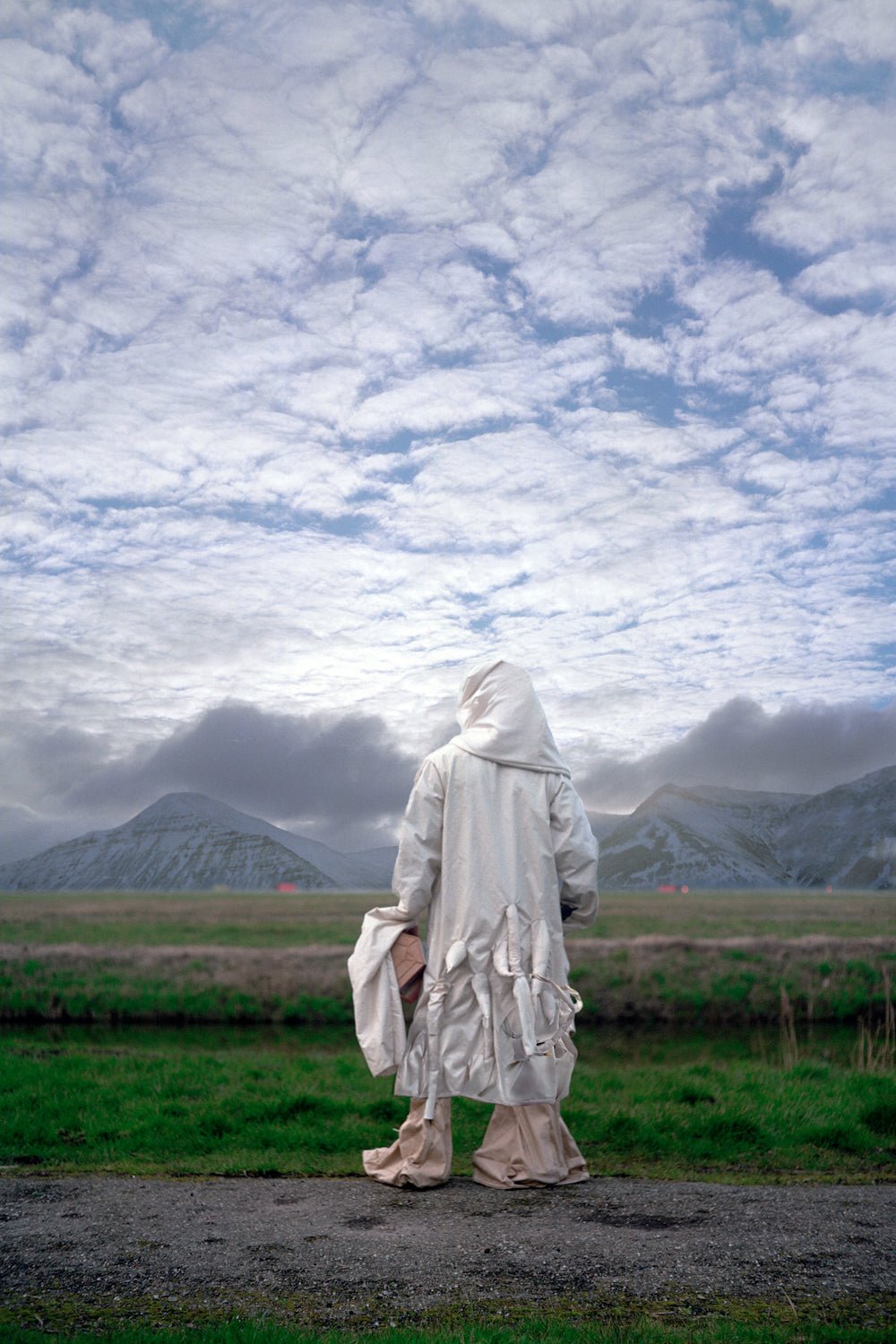
ICP Triennial - The New Mobility of Home | Ecotopia
Share
"The New Mobility of Home" was the image that headlined the International Center of Photography's 2006 Triennial "Ecotopia"
From the Triennial:
"In a time of rampant natural disasters and urgent concerns about global environmental change, this exhibition demonstrates how the most interesting and engaging contemporary artists view the natural world.
Shattering the stereotypes of landscape and nature photography, the thirty-nine international artists included in this survey boldly examine new concepts of the natural sphere occasioned by twenty-first-century technologies; images of destructive ecological engagement; and visions of our future interactions with the environment. Considering nature in the broadest sense, this exhibition reflects new perspectives on the planet that sustains, enchants, and increasingly frightens us."
From Aperture Magazine:
An Ohio power plant spews coal-dark smoke; parched California ground is spray-painted grass-green; the scarred Nevada desert appears to be marked by an immense target. These images of the natural environment under duress are all featured in Ecotopia, the International Center of Photography’s Second Triennial Exhibition of Photography and Video, which opens next month: a survey of recent art and photojournalism that broadly considers the state of nature and humanity’s often troubled relationship to it. In a time when natural and man-made disasters foretell a future of global environmental change, Ecotopia presents the works of nearly forty artists from twenty countries, who depict the industries, technologies, and ideas that shape the natural world.
Some of the artists manipulate the conventions of landscape photography and painting to produce new understandings of our complex modern relationship to the environment. Noriko Furunishi, for instance, takes multiple pictures from slightly different vantage points of the desert landscape of southern California. Then she digitally combines the images in ways that dislocate and defeat perceptions of one-point perspective, arranging the images into the vertical format of Asian hanging-scroll paintings. Her vertiginous pictures challenge our notions of landscape’s essentially soothing function and our belief in the stability of the earth itself. Mary Mattingly uses digital compositing, too, but to somewhat different ends. Her dystopian and often brilliantly lit and clearly artificial landscapes are home to a future generation of postconsumer nomads. They are pictured creating and utilizing the alarmingly ephemeral adaptive technologies that Mattingly has designed, such as water-purification systems (the “Lifestraw”), communication devices (the “g-simpod”), and defensive “wearable homes.” Wang Qingsong, by contrast, alters the environment rather than altering his photographs. For his triptych Come! Come! Wang engages the implications of China’s rapid social and economic transformations by staging a demonstration near the now-dry Grand Canal in Beijing and photographing it. In the image on the left, “protestors” carry signs bearing slogans from various political moments in China’s modern history—from the country’s confrontations with the West during the nineteenth-century Opium Wars to more recent campaigns of the Socialist government to regulate human reproduction. The image on the right shows the backs of the protestors and their signs, which are emblazoned with advertising slogans for the foreign and Chinese products that have become commonplace since the market liberalization of the 1980s. The center image records the signs and political and advertising slogans as debris that literally and metaphorically pollutes the national landscape.
Curators Statement: BRIAN WALLIS, EDWARD EARLE, CHRISTOPHER PHILLIPS, CAROL SQUIERS, AND JOANNA LEHAN
For a number of the artists in Ecotopia, ideas about landscape, and humankind’s relation to it, are portrayed in images that depend on close observation and a discerning choice of vantage point. In Mitch Epstein’s series “American Power,” the artist considers how the structures and byproducts of energy production in the United States affect daily life. The dark billows pouring from two smokestacks at an Ohio coal facility are photographed from below at a sharp angle, a strategy that emphasizes their beauty as well as their oppressiveness. Here Epstein records the industrial sublime, where terror and fear are the acknowledged risks of modern consumption. David Maisel abandons the earth-bound view and takes to the sky to photograph the structures of another kind of fear: the deadly geometry of military-storage facilities that mark the landscape of the American West, an environmental battleground. Unlike Maisel, who seems to maintain a “neutral” stance with regard to the environmental degradation he records, photojournalist Christopher LaMarca takes a more partisan approach in his reportage on American environmental activists, such as those he documents in his series “Forest Defenders,” who monitor and resist the federal government’s decision to allow logging in the old-growth reserves of North America’s national forests. Our increasing alienation from wildlife and the predominance of media in our construction of reality are two topics raised in the video works of Sam Easterson and Catherine Chalmers. Easterson’s short works are made by fitting cameras on the heads of wolves, armadillos, and other unlikely videographers. Chalmers, meanwhile, tells a parable of evolution starring a cockroach who returns to the wild, in her film Safari. The anxietydriven compulsion to control and record what is wild lends the works their absurd humor.
There is no shortage of information about the many environmental struggles, natural cataclysms, and man-made devastations that are taking place across the globe. Mainstream magazines, including Time and Vanity Fair, have recently featured substantial stories on the unavoidable crisis of global warming. For their part, photographers and other artists have long played a role in making and using images to draw attention to the beauty of and the threat to the natural world. In Ecotopia, we chart their current perspectives on a natural world that sustains, enthralls, and frightens us.©
Ecotopia is on view at the International Center of Photography, New York, September 15-November 26, 2006, and is accompanied by a fully illustrated catalog.

